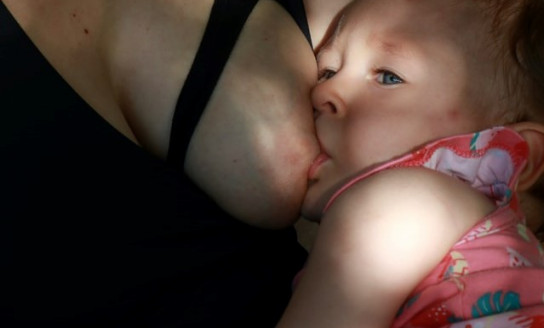It’s not unusual to experience some discomfort during the first few weeks with your breasts or nipples, and can often be resolved by talking with a lactation consultation for help with latching and positioning.
Your areola will leak oil to lubricate and protect the nipple, this is normal. However, if at any point you suspect you might have an infection, you should contact your doctor, Plunket nurse, or call PlunketLine (0800 933 922).
Here’s how you can look after your breasts in general and prevent some of the common problems of breastfeeding.
Breast care
- Make sure you practice good hygiene.
- Wash your hands before touching your breasts.
- Keep your breasts and nipples clean by washing them each day with warm water rather than soap. Soap can cause dry, cracked, and irritated skin, and can remove natural oils.
- Wear a supportive bra. Choose a maternity/nursing bra or a regular bra that fits well, but isn’t too tight. Cotton is good because it lets your skin breathe. Loose clothing is also good.
- Make sure your nipples dry completely after feeding.
- Leave your nipples uncovered or loosely covered between feeds to help them heal.
Download the BreastFedNZ app
Preventing breast problems
Breastfeeding is something you and your baby learn to do together, and it isn’t always easy, taking up to six weeks to establish. Your midwife, IBCLC (lactation consultant), Plunket nurse, PlunketLine, or La Leche League will help you if you need more support and information.
Here are some tips to help you avoid painful breast problems like sore nipples, breast engorgement, congested ("blocked") milk ducts, and mastitis.
- Make sure your baby is latching on correctly. Getting your child to latch well and feeding your baby on demand can help prevent problems from developing.
- When you’re ready to take your baby off the breast, don’t pull them off. Slip your finger into the corner of your baby’s mouth between their gums with the soft side of your finger (not the nail) next to the lip, so you gently break the suction between their mouth and your breast.
- If you’re expressing breastmilk, make sure the setting is not too high on your breast pump. Make sure you get some guidance around expressing, especially in the early days, as the use of manual/hand pumps, breast shells and similar tools are the number one cause of over-production of milk and inflammation in the breast which can lead to mastitis.
- Treat engorged breasts. If your breasts become painfully over-full, hard, and swollen, you can apply cool face cloths (flannels) on the breasts between feeds, and feed on demand. Take paracetamol as directed on the packet for pain. See your health professional if pain continues for more than a couple of days.
- To help prevent milk ducts from becoming congested, wear loose clothing and a well-fitted bra (avoid bras with underwire).
- Treat congested (blocked) milk ducts. See your GP if you can’t clear the lump in a few days, or sooner if you develop a fever or feel unwell – this is a sign of mastitis.
Even when breastfeeding, keep checking your breasts and see your doctor if you notice any changes. While it's normal for your breasts to feel lumpy when they're full of milk, the lumps should go away with breastfeeding, pumping, or gently massaging your breasts. If you notice a lump that doesn't go away on its own within a few days, contact your doctor to have it checked.
Looking after your breasts when you’re weaning
Weaning means stopping breastfeeding.
Sometimes your baby will wean themselves, and sometimes women decide or need to stop breastfeeding.
Whatever the reason for weaning, your body will still make breast milk for a period of time. It could take a few weeks or months to dry up the breastmilk in your breasts. Here are some tips for caring for your breasts if you're in a situation where you want to stop making breastmilk. It's usually best to wean slowly and gradually - this can avoid painful blocked ducts and mastitis.
- Wear a bra that’s supportive but not tight.
- Use breast pads to soak up leaks.
- Use a cold compress on your breasts to help relieve swelling and discomfort.
- If your breasts are painfully full, pump or hand express a little bit of breast milk to relieve some of the pressure. If you pump a lot or often you'll continue to make more breastmilk.
- Try not to touch your nipples or your breasts. Regular stimulation of the breasts and nipples tells your body to keep producing milk.
See your health provider if the pain continues.
The hormonal process that occurs when weaning can make mums feel down and sad at the end of weaning. Make sure you're taking care of yourself and ask for help when you need it.
